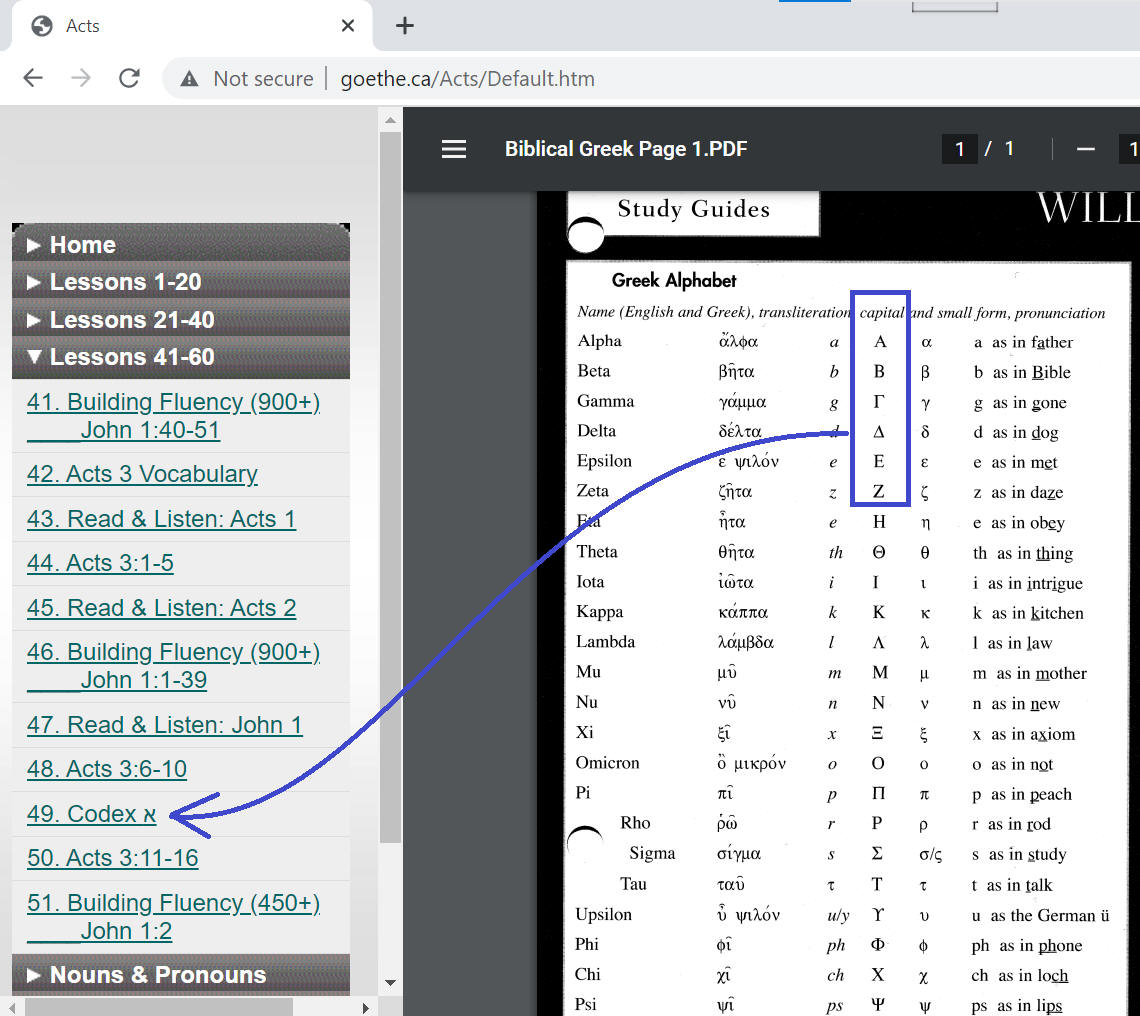
Beth Schmidt purchased a 4-page, laminated summary card for Biblical Greek, and asked for an overview on how to use it. The first page of this card contains things you have already studied. This is an excellent thing for us to look at, as it provides us an opportunity to take a step back, and do some review.
First, you can download the first page of the card and save it to your computer hard drive from here:
The first page is pretty basic stuff. But I will review it briefly so I can remind you of things you have already learned.

First, as you well know, we don't use upper case Greek letters very much in the GNT. But we use them sometimes...and it is good to be able to easily recognize them.
I have found the nicest way to wrap my mind around upper case Greek letters is to download and attempt to read Codex Sinaiticus on my computer. It is fun to puzzle out the words (with no spaces or punctuation) and the abbreviations that the scribe used.
But more than that, I have this feeling that I can connect with this brother in the Lord (almost surely a brother, not a sister in this case) who lived almost 1,700 years ago. We would speak radically different languages. We have grown up in radically different cultures.
And yet, although I could not speak Greek to him, we could write it to each other, and I could possibly communicate. But more than that, we both would know and love the same Jesus. This guy who spent hours and hours, through weeks and months, of making a copy of the Bible for others to use...he was a kindred spirit of mine.
And by reading א, I feel like I can connect with him across the centuries.
There is one more thing about the alphabet I want you to particularly notice.
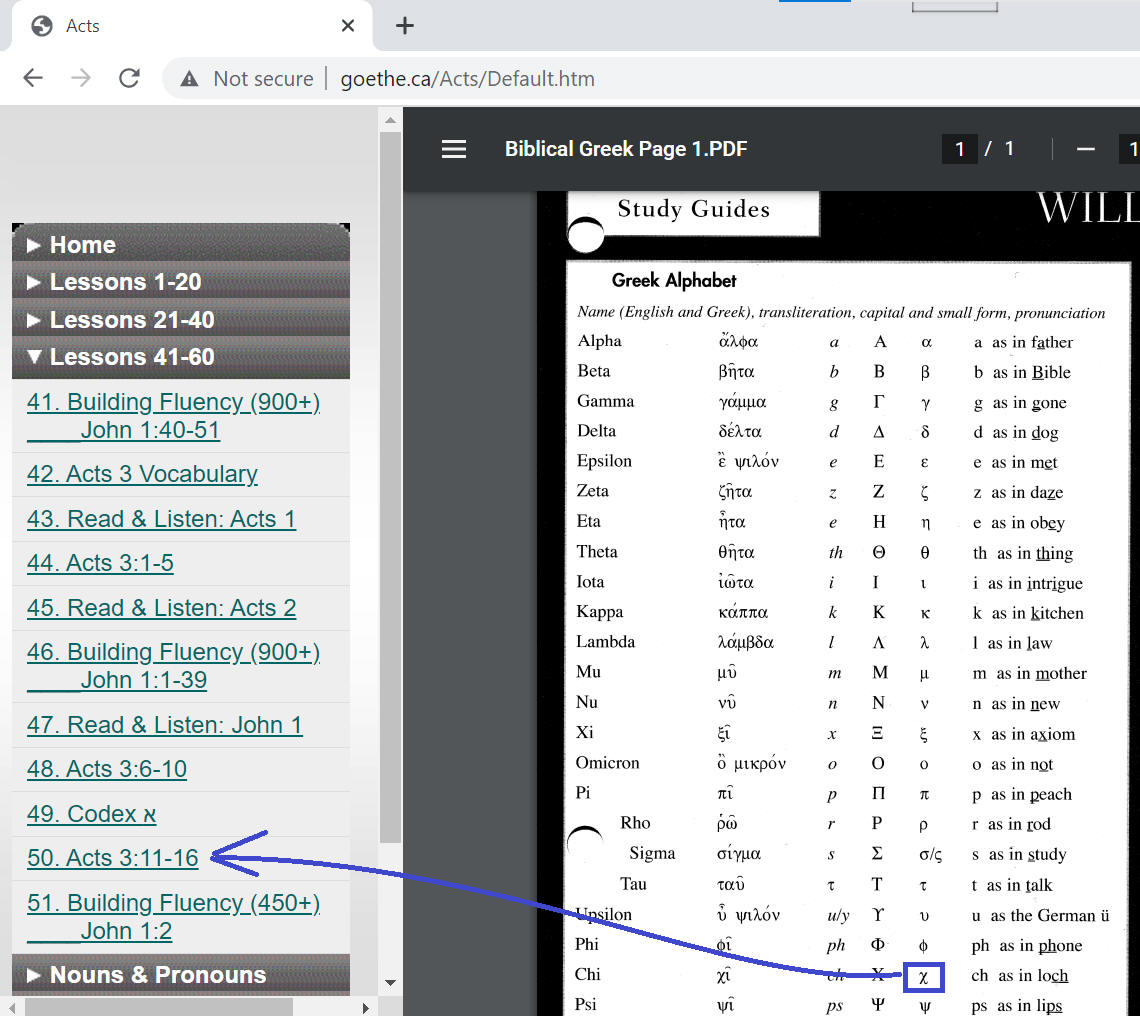
I have begun including readings by John Schwandt rather than doing them myself. John does a better job than I do at natural phrasing, that reflects the content of the text. But in addition, he is much better than me at pronouncing the character chi χ. It is less of a hard "k" sound, like I tend to use, and more like the "ch" in the German name "Bach". So he is a good model for you to use in your own reading.
The next section of the card deals in noun endings. It is precisely the same as what we have covered on our web site.
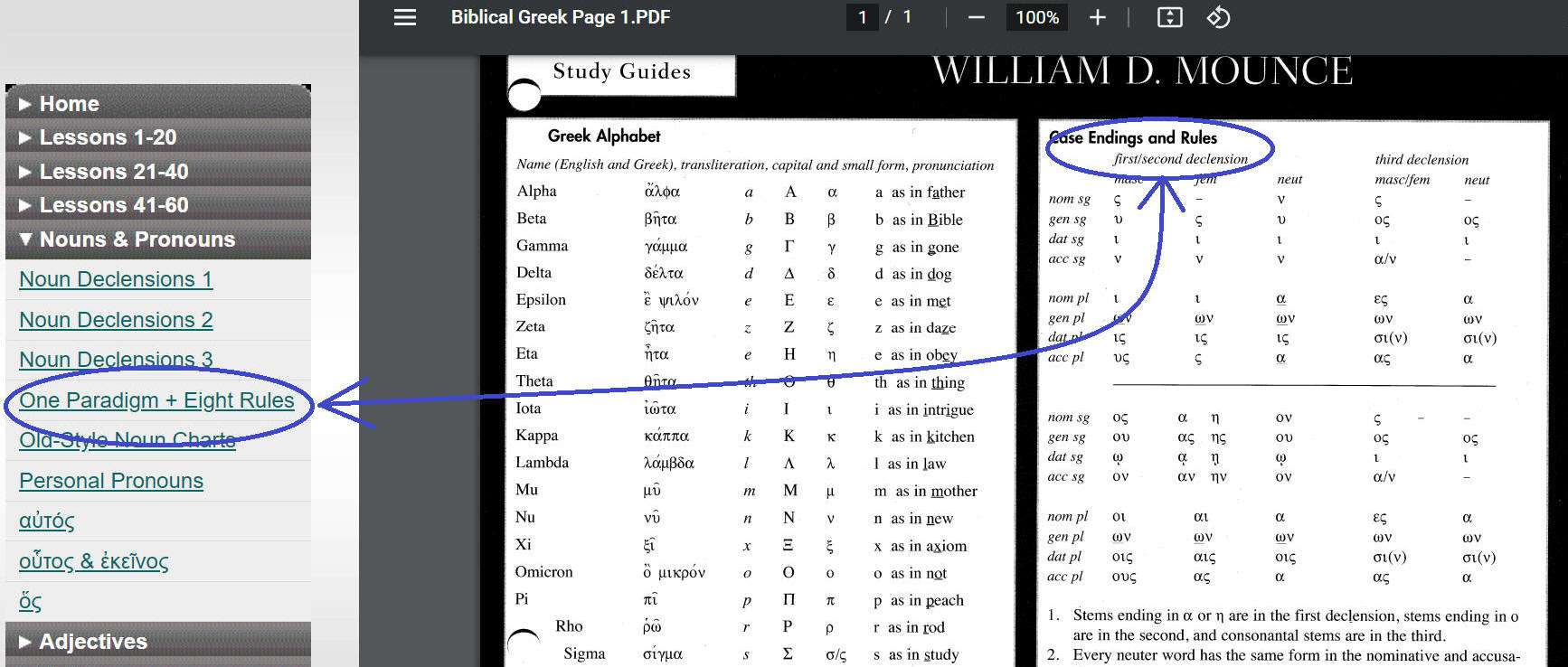
And Mounce provides some illustrations of how this "one paradigm and eight rules" work out practically in some common Greek words.
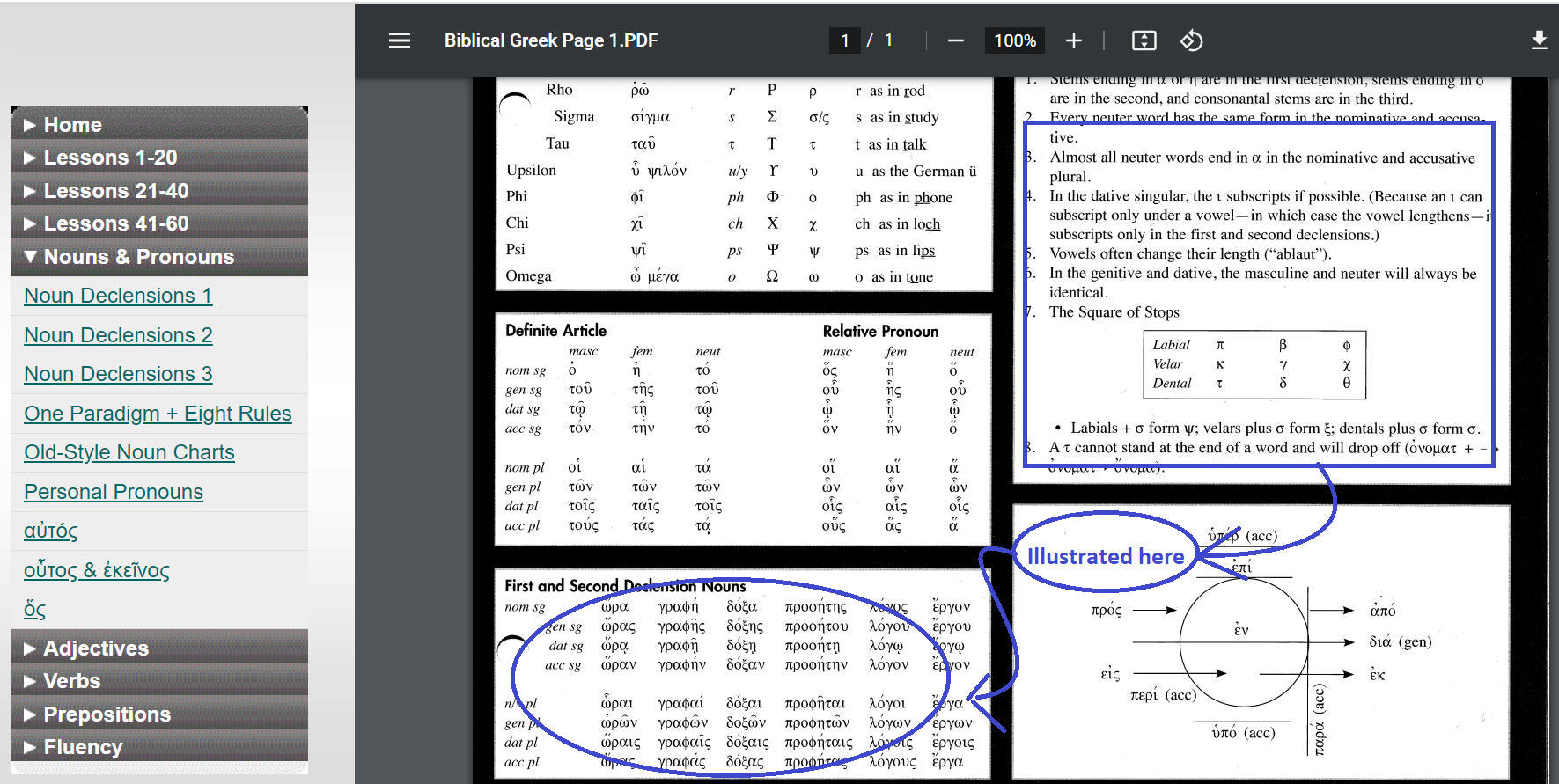
The definite article I cover here:
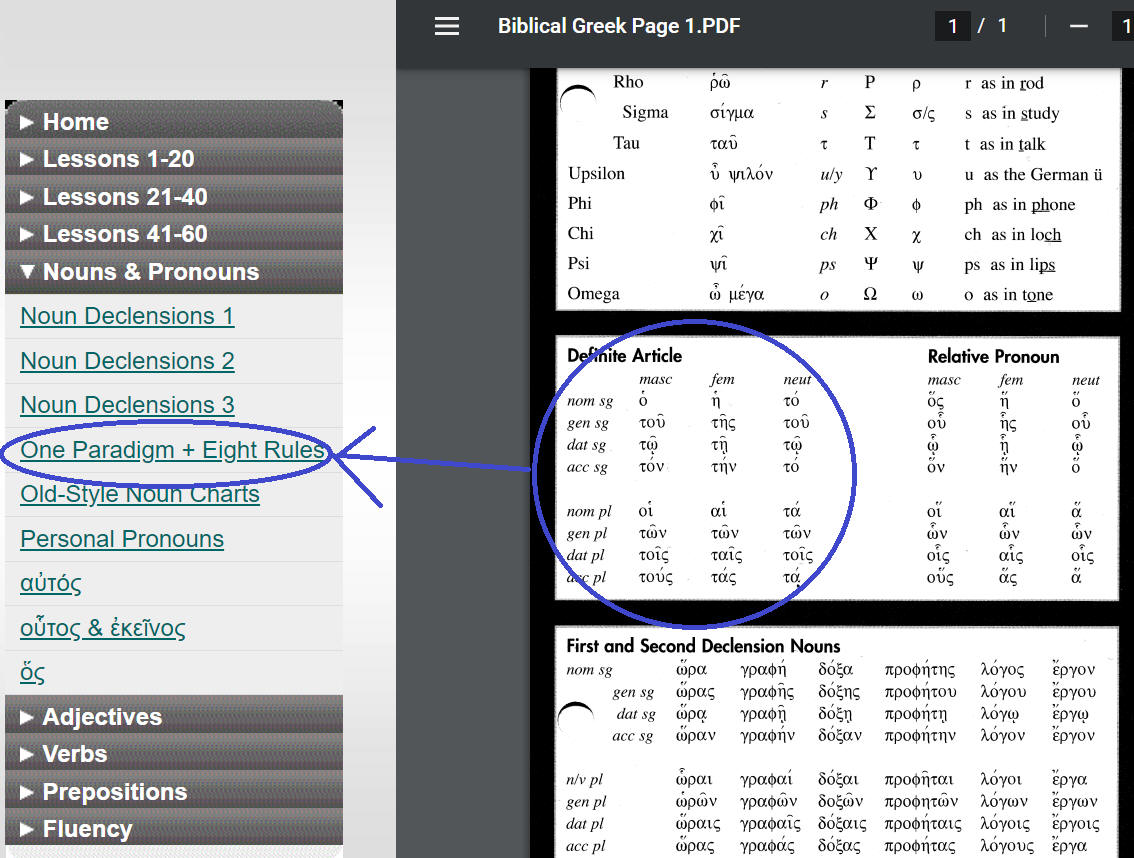
...and the relative pronoun I cover here:
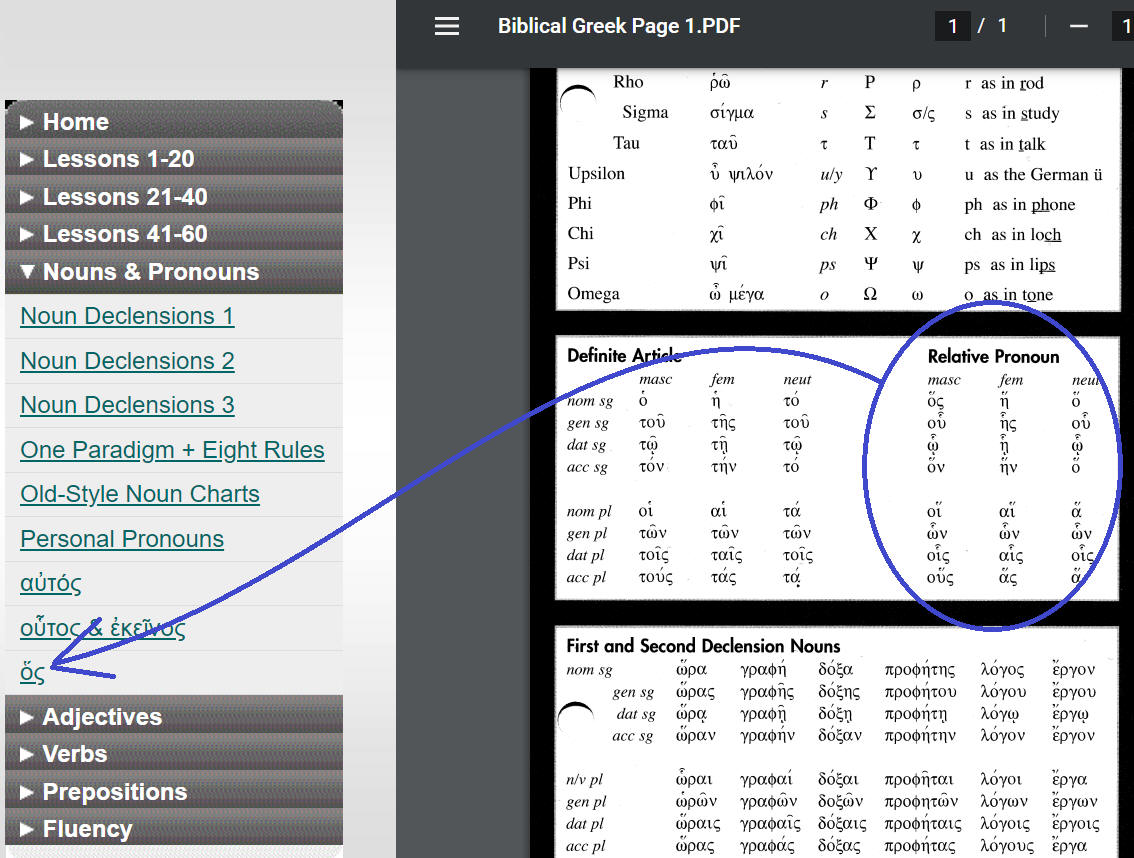
The final piece of page one of Mounce's language summary is about prepositions...which we cover here:
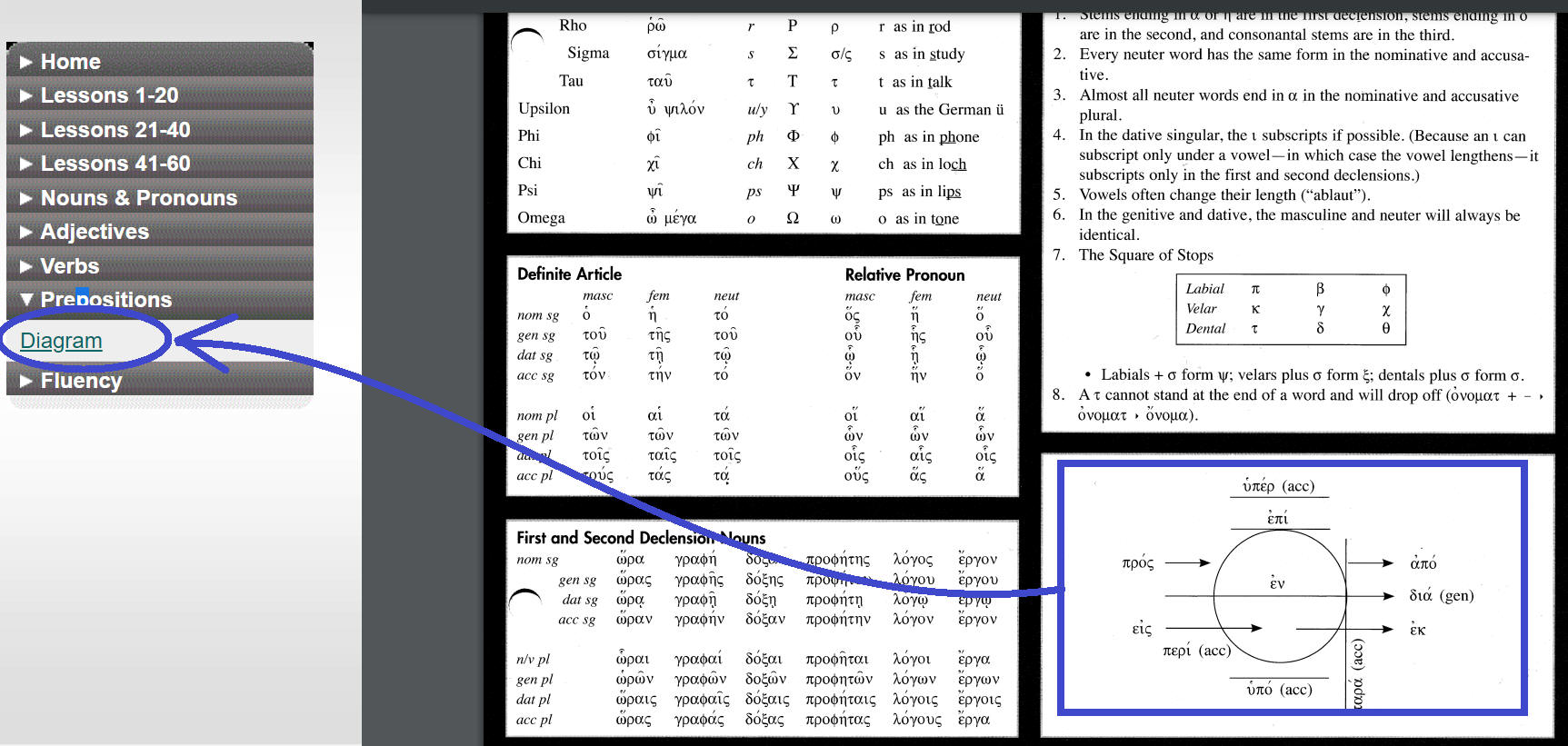
I will address each of the three remaining pages in this laminated card in subsequent lessons.